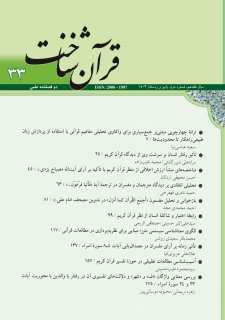Abstract:
Aiming at expounding the systemic semantic model of text, this research deals with the systematic understanding of meaning in the Holy Qur’an. Semantics is one of the main topics in contemporary linguistics, which focuses on aspects of context, situation, and discourse, but has predominantly dealt with language and meaning from a one-dimensional perspective. In contrast, the Intentional Grounding Theory, rooted in the tradition of Islamic linguistics, regards linguistic meaning in hierarchical layers, from word level to sentence structure and the speaker's intention. Confronting with the structured system of the Qur’anic language, the function of this perspective reveals the necessity for its completion. This descriptive-analytical research relies on the rational principles of linguistic implications and Qur’anic bases, considering that the semantic investigation at the macro level of a text is based on the model of systemic coherence. This method emphasizes the totality of systematic meaning at the macro level of a text and examines the components of the text within a holistic cognitive framework. The internal relation of text structure, the conceptual links of components with the internal system, and the network structure of meaning are the components of this model. Systemic semantics, while benefiting from principles of contextual conceptual analysis, regards a deeper strategy necessary for revealing any theory or attributing any viewpoint to the Qur’an. This approach can open a new horizon in the structured interpretation of the Qur’an and provide a conceptual foundation for theorization in the realm of Qur’anic knowledge and humanities.







